Navigating Hail Damage Roof Claims in Florida: A Guide for Homeowners
May , 2023 | 13 min. read
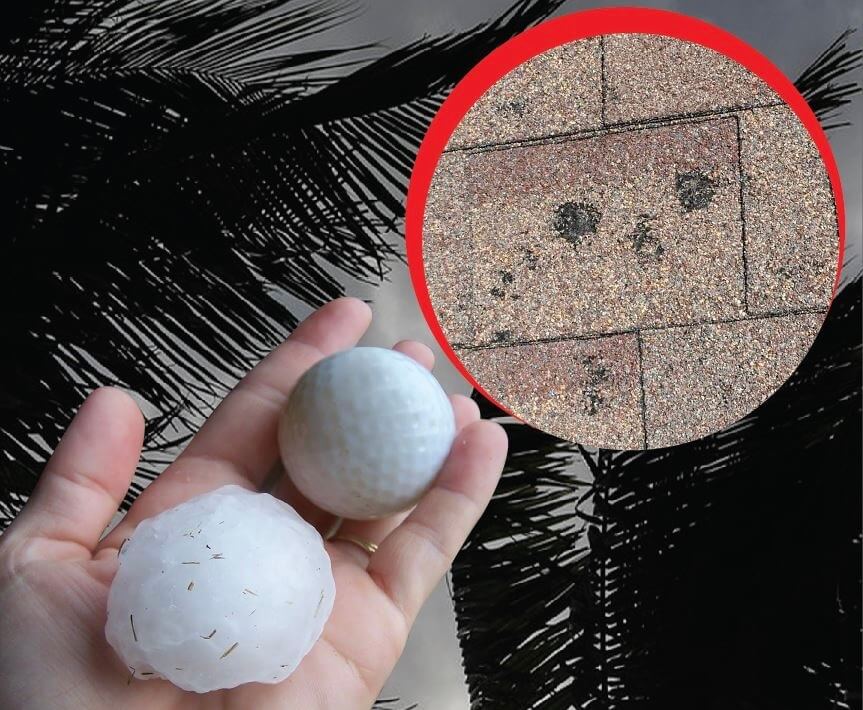
Are you a Florida homeowner who's worried about the recent hailstorm and the potential damage it may have caused to your roof? You're not alone. At RoofCrafters, we understand how stressful it can be to deal with the aftermath of a hailstorm.
As a family-owned business with over 30 years of experience in the industry, we know firsthand the kind of damage hail can cause to your property. If left unattended, hail damage can lead to leaks, wood rot, and mold. That's why we've put together this guide to help you understand the hail damage repair and insurance claim process.
In this guide, we'll cover everything you need to know about hail damage, including:
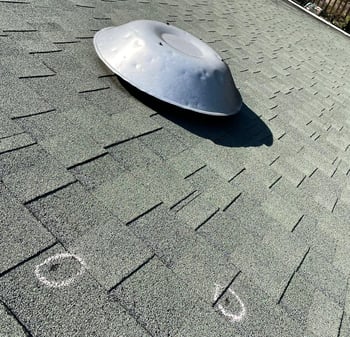
- How we check for hail damage
- What hail damage looks like
- How to repair hail damage
- How to file an insurance claim for hail damage
- How much it may cost to repair hail damage
So, whether you've recently experienced hail damage or want to be better prepared for future storms. We're here to help educate you and hopefully by the end of this guide you'll be better prepared to navigate the process.
Let's get started.
How to Check for Hail Damage on a Roof
As a homeowner, it's important to know how to identify hail damage to your roof. This will help you take the necessary steps to prevent further damage and file an insurance claim if necessary. In this section, we'll cover two ways to check for hail damage on your roof:
- Visual inspection techniques
- Signs of hail damage to look for
Visual Inspection Techniques
Performing a visual inspection is one of the best ways to identify if you have hail damage to your property. It's really important in Florida to identify the damage prior to calling an insurance company to file a claim.
Here's how to do it:
- Inspect your property from the ground: Look for any dented metal or missing shingles. Or any other signs of damage to your gutters, siding, or other exterior surfaces.
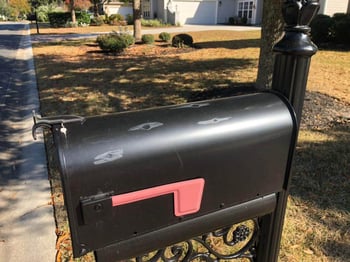
- Check for granule loss: Hail can knock off the protective granules on your shingles, which can lead to further damage if left untreated. Look for excessive granule loss in your gutters or around the base of your home.
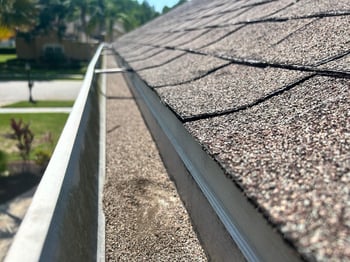
- Look for cracks or punctures: Hail can cause cracks or punctures on your shingles or other roofing materials. Inspect your roof for any signs of cracking or puncturing.
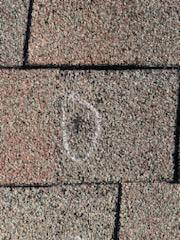
Signs of Hail Damage to Look For
Here are some signs of hail damage to look for:
- Dented gutters or downspouts: Hail can cause dents or dings in gutters and downspouts. Check for any signs of damage or displacement.
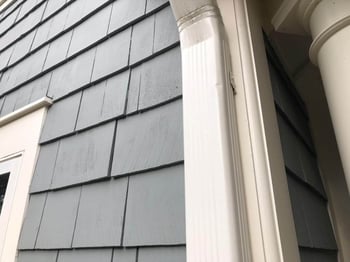
- Bruised shingles: Hail can cause bruises or indentations in shingles, which can lead to leaks and further damage. Look for any signs of bruising or indentations on your shingles.
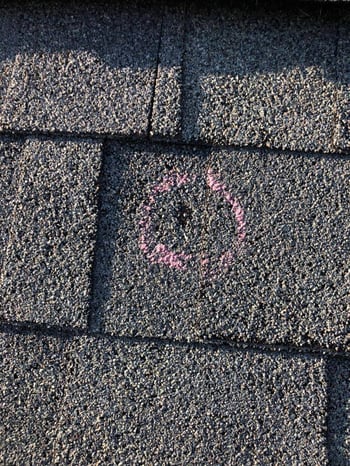
- Cracked or broken tiles: If your roof is tile, hail can cause cracks or breaks. Check for any signs of cracking or missing tiles.
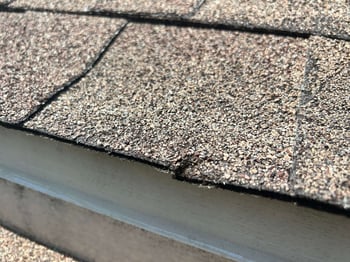
- Garage door damage: Look for damage that may have occurred to your garage door or other metal objects on your property.
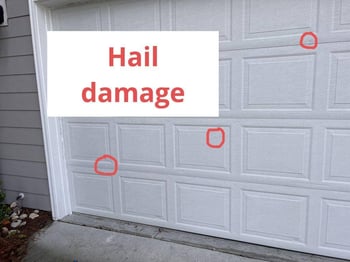
- Window damage: Inspect the windows around your home. hail can damage the metal window frame or cause damage to the screens on your windows.
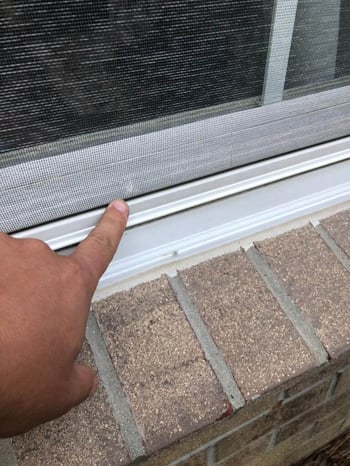
Remember, hail damage to your roof may not always be visible to the naked eye, so it's important to have your roof inspected by a professional if you believe your home was hit by a recent storm in Florida.
What Does Hail Damage Look Like on a Roof?
Hail damage on a roof can range from subtle to severe, and it's essential to know what to look for when assessing the damage. Here, we'll cover some of the common types of hail damage and provide examples of hail damage on different roofing materials.
Common Types of Hail Damage
The most common types of hail damage on a roof include:
- Bruises: Bruises occur when hail impacts the shingle but does not break the mat. They may not be immediately visible but can cause damage over time.
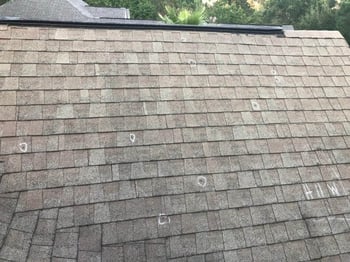
- Cracks: Cracks are visible breaks in the shingle's surface that occur when the mat is dented by the impact of hail.

- Dents: Dents occur when hail impacts the metal vents. They are usually visible and can cause significant damage to the metal.
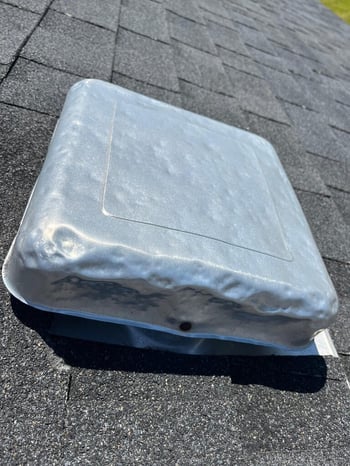
Examples of Hail Damage on Common Roofing Materials
Different roofing materials can experience different types of hail damage. Knowing what to look for on each will ensure the damage is there prior to making a claim. The damage needs to exceed your Florida deductible before considering filing a claim.
Here are some examples:
- Asphalt shingles: Hail damage to asphalt shingles can appear as small circular cracks or dents, or they can be large splits or tears in the shingle.
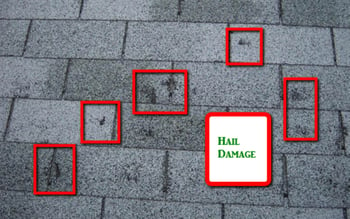
- Metal roofs: Hail damage to metal roofs can appear as dents or dimples, or they can be more severe and cause punctures or tears in the metal.
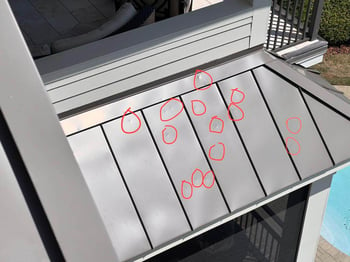
- Clay or concrete tiles: Hail damage to clay or concrete tiles can appear as cracks or chips on the surface of the tile. The tiles can also be completely shattered.
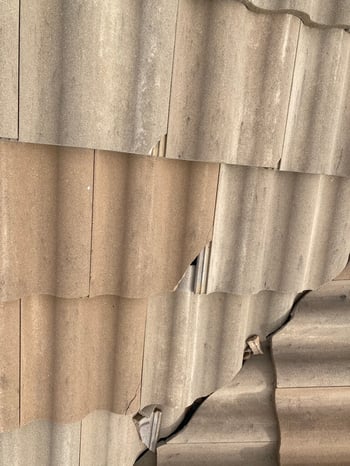
By understanding what hail damage looks like on different roof systems you can better identify damage to your roof. And then take the appropriate action to get the damage repaired.
How to Repair Hail Damage on a Roof
Hail damage on a roof can be a serious issue if left unattended. It can lead to leaks, wood rot, and mold. That's why it's crucial to address the damage as soon as possible. In this section, we'll cover the types of repairs that may be necessary. Also whether you should attempt to repair the damage yourself or hire a local Florida roofing company.
Types of Repairs that May Be Necessary
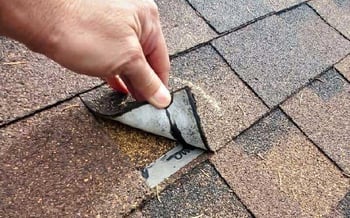
Depending on the severity of the hail damage, different types of repairs may be necessary. For minor damage, such as small dents or cracks, simple repairs may be all that is needed. This can include replacing damaged vents or replacing damaged shingles. However, for more extensive damage, such as large dents or missing shingles, a full roof replacement may be required.
DIY vs Professional Repairs
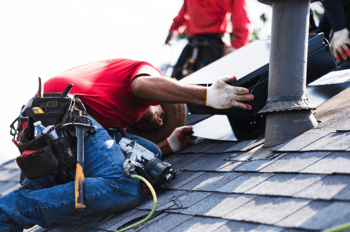
When it comes to repairing hail damage on your roof, you may be wondering whether to attempt the repairs yourself or hire a professional. While DIY repairs may seem like a cost-effective option, it's important to consider the potential risks and drawbacks. For example, if the repairs are not done correctly, it could lead to further damage and even more costly repairs down the line. Hiring a roofer in Florida experienced in storm damage repairs may be the safer and more reliable option. They'll have the expertise and equipment to properly repair the damage in a safe and timely manner.
How to File an Insurance Claim in Florida for Hail Damage

If you suspect hail damage to your roof, it's important to have your property inspected to confirm the damage. Filing a claim that doesn't exceed your Florida deductible is not advisable. Confirm there is damage and then file your insurance claim as quickly as possible.
Here are some steps to follow when filing a claim:
- Contact a local roofer: Call a local roofing company and have them come out and inspect your roof. They'll also inspect your property for any collateral damage. (gutters and downspouts, windows, garage doors, etc) You don't want to file a claim if you don't have enough damage to meet or exceed your deductible.
- Contact your insurance company: Call your insurance company to report the hail damage and begin the claims process. They will likely ask for information about the damage, the date of the storm, and your policy number.
- Document the damage: Take photos and videos of the hail damage to your roof, and any other areas of your property that were affected. This will help support your claim and can be used as evidence during the claims process.
- Review your policy: Familiarize yourself with the terms and conditions of your insurance policy. Learn your deductibles or co-payments that may apply.
- Meet with an adjuster: Your insurance company will likely send an adjuster to inspect the damage and assess the cost of repairs. Be sure to ask questions and provide any additional documentation or estimates that you may have.
- Negotiate your settlement: If the insurance company offers a settlement that you feel is too low. Consider hiring a public adjuster and an attorney to help you with the settlement process.
Information To Have Ready When Filing Your Hail Damage Claim
When calling your homeowners' insurance carrier to file your hail damage claim, be sure to have the following information and documentation on hand:
- Policy number and insurance company contact information
- Date and time of the hailstorm
- Photos or videos of the damage
- Any additional documentation or evidence that supports your claim
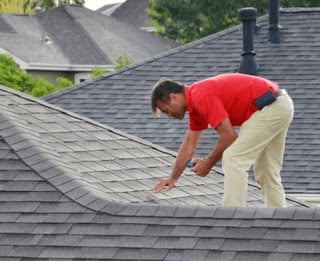
You will increase your chances of a successful insurance claim for hail damage to your roof by following these steps.
How Much Does It Cost to Repair Hail Damage on a Roof?
When it comes to repairing hail damage on your roof, the cost can vary greatly depending on a few factors. The severity and type of damage, the roofing material, and the extent of the damage can all impact the cost of repairs.
Factors that Affect the Cost of Hail Damage Repairs
The following factors can affect the cost of repairing or replacing your entire roof due to hail storm damage:
- Severity and type of damage: Hail damage can range from small dents to large holes and cracks. The more severe the damage, the higher the cost of repairs will be.
- Roofing material: Roofing materials have varying levels of cost. For example, asphalt shingles are cheaper than metal roofs. The cost of repairs can also vary based on the type of material used for the repairs.
- The extent of damage: The size and scope of the damage can also affect the cost of repairs. A small area of damage will be less expensive to repair than a larger area.
Examples of Repair Costs for Different Types of Hail Damage
The cost of repairs for hail damage can range from a few hundred dollars to several thousand dollars. And full replacement only costs you your storm deductible.
Here are some examples of repair costs for different types of hail damage:
- Small dents: A few small dents can cost around $300 to $750 to repair.
- Large dents: Larger dents may cost anywhere from $750 to $1,500 to repair.
- Holes or cracks: Holes or cracks in the roof can cost between $1,500 to $4,500 to repair.
- Complete roof replacement: If the damage is severe enough to need a complete roof replacement. In Florida, this will only cost you your storm damage deductible for your homeowners' insurance policy. You can finance your deductible if needed.
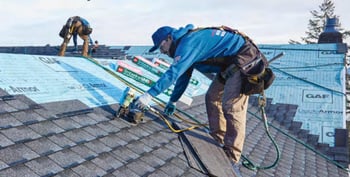
It's important to keep in mind that these are ballpark estimates and that the actual cost of repairs may vary depending on your specific situation. It's always a good idea to get 2 to 3 estimates from local roofers to ensure that you're getting a fair price for the repairs.
Schedule Your Professional Hail Inspection Today
In conclusion, navigating hail damage claims in Florida can be a daunting task for homeowners. But with the right knowledge and preparation, it can be a lot less stressful.
It's also important to keep in mind that regular maintenance and inspections can help to catch damage you may not have been aware of.
If you're concerned about the damage that the recent hailstorm may have caused to your roof. Don't hesitate to schedule a professional inspection with RoofCrafters today. Our team with 30 years of experience will provide you with an exceptional experience. We'll guide you through the claim process if necessary and review the next steps. Click the button below to schedule your inspection.
At RoofCrafters, our mission is to provide job opportunities for others to thrive and grow while making a meaningful impact within our communities.





